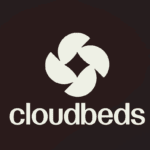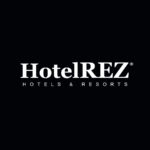 Budget season is fast approaching and I’m writing this article to highlight some areas to look at when you’re reviewing a hotel financial budget. Maybe you want to make sure you have all your ducks in a row before you submit your 2019 numbers to the corporate office or perhaps you’re the one doing the review. This article will give you some ideas of what you need for your review, what to look for and where to find it.
Budget season is fast approaching and I’m writing this article to highlight some areas to look at when you’re reviewing a hotel financial budget. Maybe you want to make sure you have all your ducks in a row before you submit your 2019 numbers to the corporate office or perhaps you’re the one doing the review. This article will give you some ideas of what you need for your review, what to look for and where to find it.
The only thing we know for sure about the budget is, it’s wrong. Anonymous
Budgeting is first and foremost a business plan with numbers. It’s the culmination of all the wants, wishes, aspirations and ideas laid out in nauseating detail for the coming year. Budgeting is also a game played by managers, executives and owners at all levels. ‘Under promise and over deliver’ is many a hotelier’s game because their incentives are linked to the budget. Missing the GOP, ‘Gross Operating Profit’ target for the year in the hotel is a big deal. Miss it two years in a row and depending on what’s in your management agreement, your brand might be out in the street.
Having a good budget, one that’s a stretch but not too much of a stretch is what you want to have and in order to get it, you need to know what to look for.
If you don’t have a map, any road will take you where you want to go. Anonymous
Peformance reports
The first thing you want to have for review when looking at the budget is a P&L style report that lays out the following from left to right: next year’s budget, the current year’s latest reforecast, the current budget and last years actual. In addition, you will want detailed level data on the prior 3-5 years. What have the trends been on occupancy, rate, revpar, average F&B customer spend, expenses per department, productivity and average wage rates? What about year over year flow thru in rooms, F&B, non-operating departments and GOP? Your system should be able to produce this as long as you have the actual history under your belt. Take the time to prepare this report in advance of your review schedule and it will make life much, much easier.
The second instrument you want to examine is the YTD actual performance relative to the current budget and last year. This is where you will find the most common bait and switch routine coming from many of your constituents. Let’s say we’re reviewing budgets in mid-September. You will need the YTD August P&L with a detailed comparison to YTD last year and YTD budget. In this imagined scenario, the hotel is doing well to last year with revenues up YTD August by 1.0 million and GOP is up $600K. The same kind of comparison shows up relative to the current year’s budget. That’s the bait.
Now here comes the switch. When we look at the year-end rolling forecast for the current full year and compare that to a full year, last year and the full budget you will often find the prosperity we have seen YTD stop or even worse, it will reverse. This is the sandbaggers biggest opportunity to tell his or her tales of woe. In defense of poor performance in the last four months of the year, you will hear amazing stories about one time windfalls last year, events and business that were a once in a lifetime deal, rebates and credits galore last year. In defense of the slippage to the current year’s budget at year end, you will hear whining about expense timing, cleaning projects, and lite accruals. These are the sandbaggers’ stories and you have been warned.
One sure fire way to throw some water on the budgeting sandbagger and their YTD performance vs the Y-end numbers is to have last year’s scenario laid out. What was their story at budget time last year relative to that year’s performance and how did they finish the year? Sandbagging the budget is an annual event and it can be well worth the effort. If I can downplay the last quarter’s performance by 200K in GOP, that means next year’s budget target is at least 200k less. A great way to deter the sandbagger is a final review of the budget mid-January. Most hotels can swing this with their brand and ownership should insist on it.
Groups
The second tool you will want at the ready is your group rooms report. What’s the pace? In many hotels, groups form the base of business. Understanding the group rooms picture is critical to the budgeting process. Where are we YTD with our pickup for next year, where were we last year at the same time? What is the year-end crossover group rooms on the books target for this hotel and how far do we have to go to get there? How does this compare to last year? What are the definite and tentative numbers each month? What are the associated rooms rates for each month? What about the banquet spend with minimums required? Where are the opportunities to yield and where are the need periods? What is the forecast for citywide events?
You will want to have this group rooms report checked against the reservation/sales system. Sandbagging the group rooms is not uncommon. One way to test this is to look at last year’s performance in the final quarter with the production of group rooms on the books. Hotels are notorious for busting the dam on group contracts going firm in the final quarter. Don’t be sold on the story that next year’s group performance is down. Dig into the details.
Corporate rooms
Corporate room nights serve to provide a base as well in many hotels. A corporate rooms production analysis is what you need to see. Who are the top 20 contracts? What was their production last year and YTD this year? What are the rates and what’s the strategy for next year? Who are the top performers? Who is not producing their committed room nights? Who has last room availability? Who do we need to be aggressive on the rate with? Having a firm strategy on your corporate rooms business is a key component in many hotels. Adjusting this base up where possible in a market that is going up is what you want to look for. If your market is tight or retracting, preserving this base is very important.
Brand expenses
The third piece of incredibly valuable information you will want at the ready is the report that details all the corporate and regional brand related expenses that are included in the budget with the programs laid out and a comparison to last year’s actual spend and the current Y-End forecast by individual program. If your reviewing a branded, managed hotel this report is critical. Brands sell management services. Brands endeavor to mandate programs and they want owners to pay. What is baked into your operating budget that the brand will end up charging you back for? Do these programs make sense? How much was in last year’s budget by program and how much is the forecasted spend for the current year? What programs are optional and which optional ones are included in the budget? Which programs are mandatory, how much are they and why?
Understanding what’s layered into your budget that comes from your brand is mission critical if you’re an owner. If you manage the hotel you will want to have a firm handle on this as well. In many scenarios, money is budgeted and never spent on corporate programs. Hotels love to include budget items per the brand’s direction and sometimes when the rubber hits the road, the hotel will not spend that money. It’s a great way to inflate the budget and use the reason that it’s a corporate program.
Labor
In any hotel budget, the biggest cost is labor. To review any hotel labor budget, you need to be able to measure productivity. Is next year’s budget productivity better than this year’s performance? You better hope so. Why would anyone present a budget for their hotel and project lower labor productivity? How many rooms will we sell next year and how many hours of labor in the rooms department? How many customers will I serve in F&B and how many hours of labor will it take to serve each one? How many EFTE’s do I have in each non-operating department and how does this compare to the current year and last year?
Hotels are in the habit of adding bodies. If all you are looking at in your budget is dollars of payroll without the corresponding hourly statistics, EFTE’s and productivity measurements, you’re flying by the seat of your pants. Even if these stats are not included in your budget and actual financial statements, they are easily found and a supporting analysis of the budget labor with productivity is a must. If you need to review and ultimately approve a budget, you need to understand the productivity.
On the other side of productivity look at the average wage rates, do they line up with reality? What is the plan for wage movement next year – Union contracts, local wage laws? It’s all there. You just need to know what to ask for and where to find it.
Revpar index
Revpar index is another key document. What are the properties index YTD and last year? What is the relationship between rate and occupancy, groups and leisure? How does this relate to the 2018 growth projections for the hotel and the hotels current REVPAR index position? Are we talking share or are we giving share? Are we gaining or losing share from occupancy or rate, groups or leisure? You should see a direct correlation between the hotel’s strategy and the REVPAR index predictions for your market.
The second report you will want to see and have a detailed look at is the supply and demand index for your market. What is the picture of the total market and how does the hotel’s position correspond; historically in the past 3-5 years, this year, next year and beyond? This report should also include new inventory planned in the marketplace. We will want to see a picture that shows our hotel making gains in its marketplace. If not, then what are we doing to fix this?
Staffing
The staffing guide is another must-have document. What are the fixed and variable positions in the hotel? You will want to see this report laid out for the entire operation. You want to see this for the operating and non-operating departments. Looking at a department like the front office and seeing the staffing formula laid out each day of the year. As an example: at the desk, we operate 7-24 and the first step is start with the fixed positions we require daily. Then add the incremental staff and hours needed to handle the arrivals, departures, and occupancy at the different levels, separate group and leisure rooms. In my example, we have a 300-room hotel. I need two overnight staff regardless of occupancy and three AM and four PM staff. That’s my fixed front office staffing. After 100 arrivals, I need to add a 4th PM. After 165 arrivals, I need a 5th PM. With my AM’s I only need a 4th after 100 departures. With my overnights, I only need a 3rd when weekend occupancy is above 200 rooms for additional security. A detailed staffing guide should be developed and the daily activity in your hotel serves to populate the drivers and voila you have a powerful tool!
Flow thru to GOP
The biggest sin I see is hotels presenting a budget with low balled revenues and poor flow thru. Depending on your market, its current performance and its historical performance, you should see a picture emerge for next year well before you prepare the budget. An old GM of mine was fond of doing the budget in 5 minutes. He would know the historical annual revenue gains for the past 3 years, he understood the current market conditions and no one knows what will happen tomorrow. He would say something like this: “In the last 3 years we have grown the top on average 7% each year and our flow to GOP over the same period has been 56%. So, let’s not waste any time here, next year I want to see 6.5% revenue gain and a 50% flow to GOP and let’s let corporate and the owners tell us where we can find more.”
Simple really. Produce a reasonable positive picture based on good performance and good overall management. Why would we produce a dog and try and sell it? So many hotels make this mistake on their first-round budget. Corporate and regional teams usually find these and get them in shape before they are presented to owners.
More than anything, your budget speaks to your ability to manage – how you manage the sales team, catering and banquets, the entire operation and ultimately deliver the GOP. If you do a budget and it lacks growth and or flow, this simply points out where you need to get to work. Don’t present your problems, present your solutions.

















